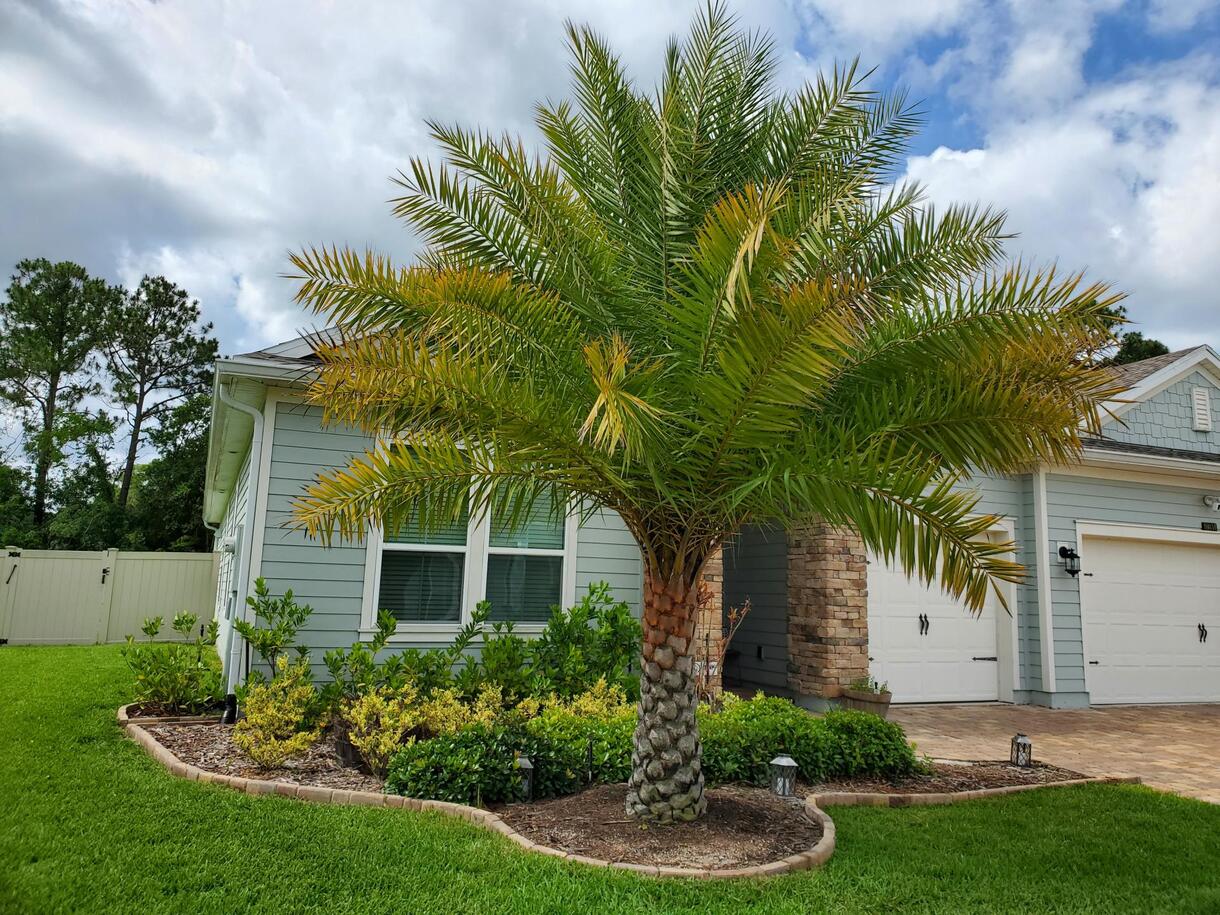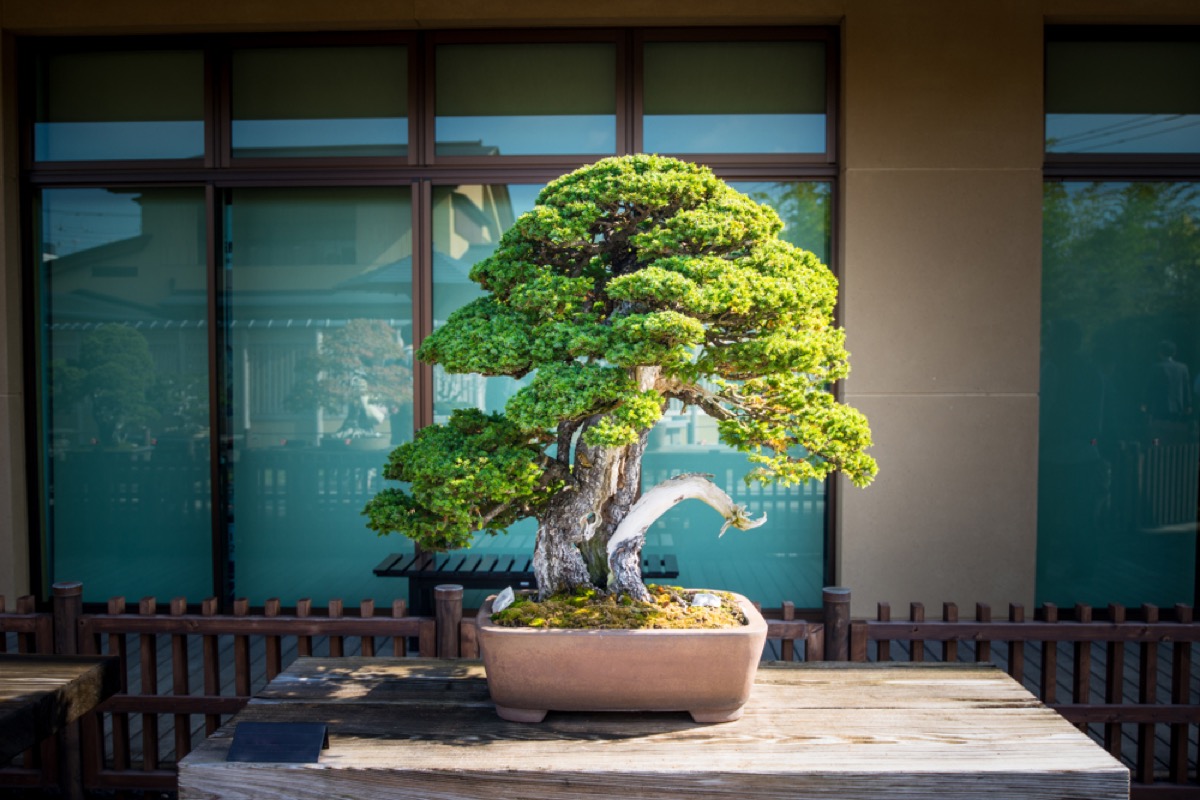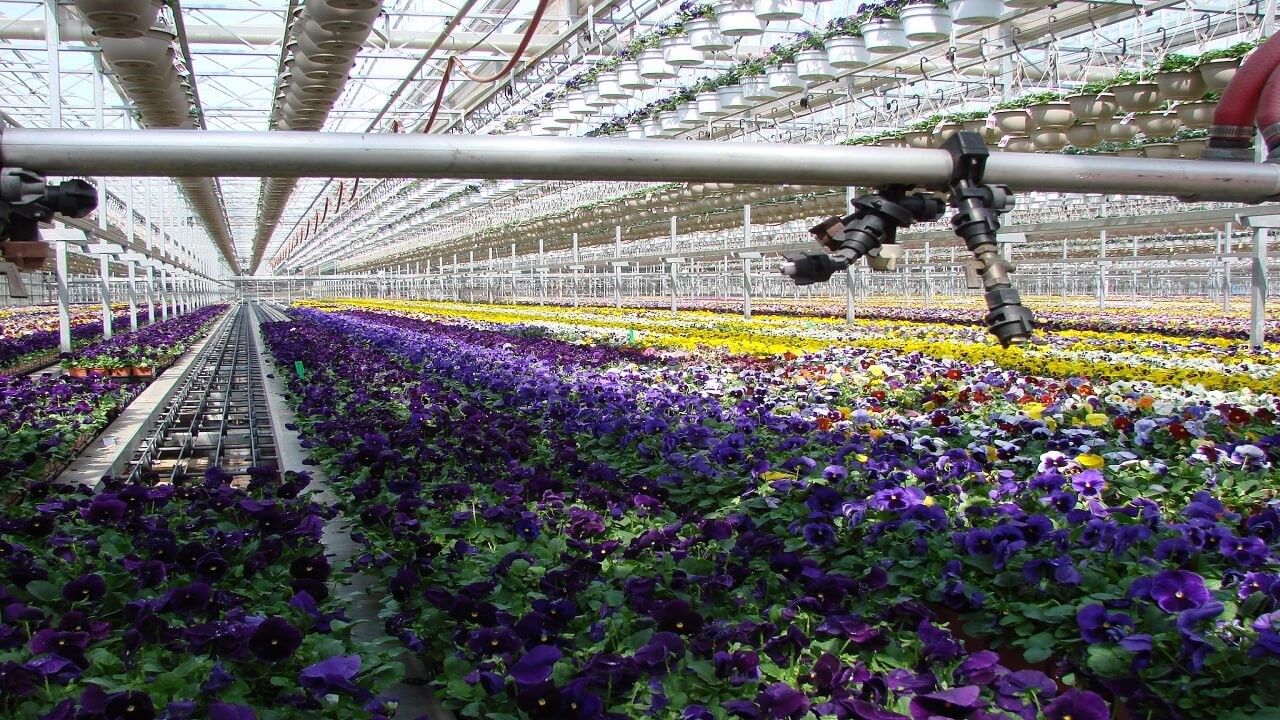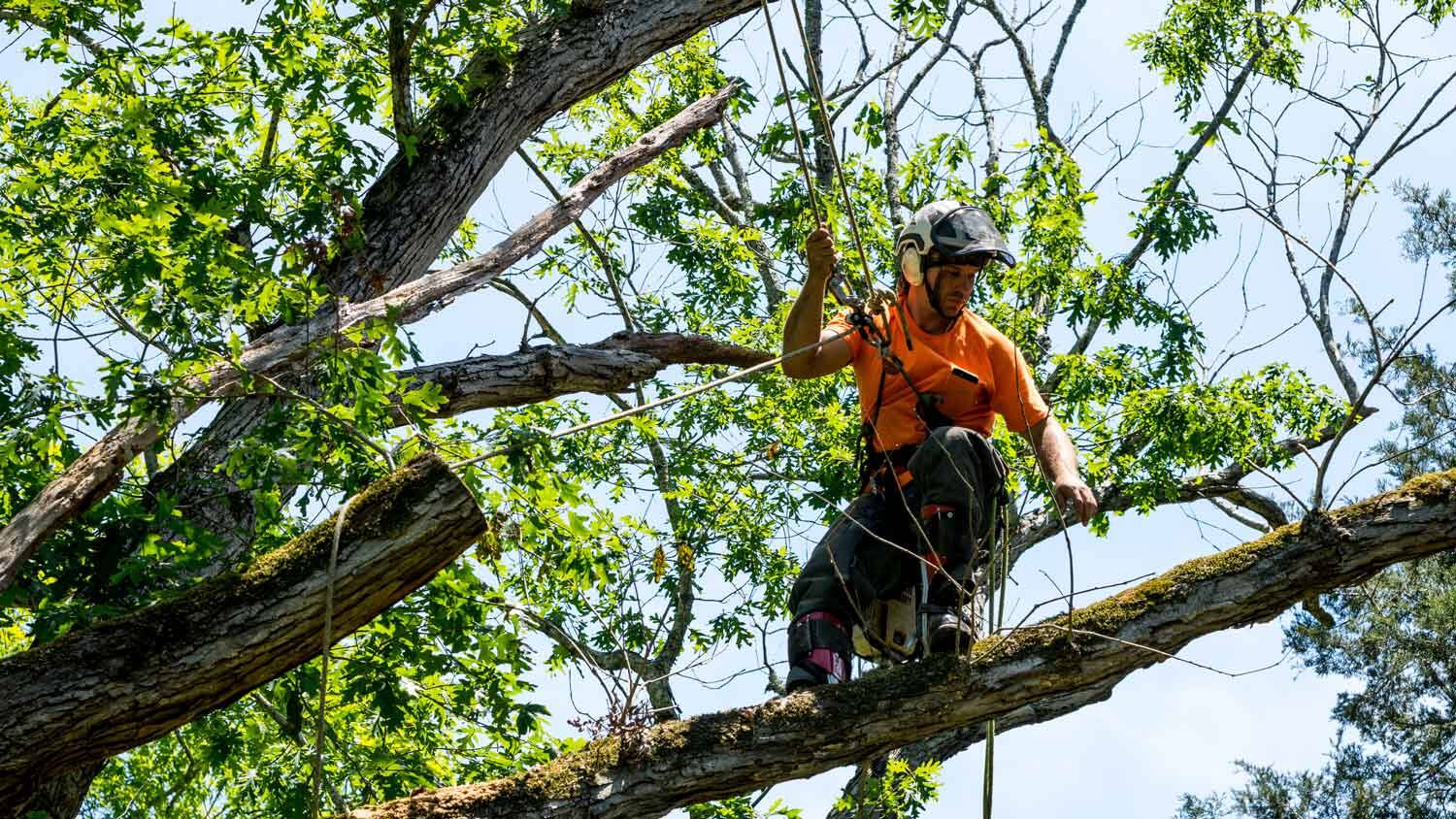Home>Types of Gardening>Ornamental Gardening>How Much Water Should A Bonsai Tree Get


Ornamental Gardening
How Much Water Should A Bonsai Tree Get
Modified: February 9, 2024
Discover the proper watering technique for your bonsai tree in ornamental gardening. Learn how much water your bonsai tree needs to thrive and avoid overwatering.
(Many of the links in this article redirect to a specific reviewed product. Your purchase of these products through affiliate links helps to generate commission for Chicagolandgardening.com, at no extra cost. Learn more)
Table of Contents
Introduction
Welcome to the wonderful world of bonsai trees! These miniature trees, meticulously cultivated and shaped, have captivated gardeners and nature lovers for centuries. If you have recently found yourself enchanted by the beauty and artistry of bonsai, you may be wondering how to care for these delicate creations, specifically when it comes to watering.
Watering is one of the most crucial aspects of maintaining a healthy bonsai tree. However, finding the right balance can be challenging, as overwatering or underwatering can both have detrimental effects on your bonsai’s health. This article aims to provide you with the knowledge and guidance to ensure your bonsai trees receive the appropriate amount of water they need to thrive.
Whether you are a beginner or an experienced gardener, understanding the needs of your bonsai tree is essential. Factors such as species, climate, pot size, and soil composition all play a role in determining how much water your bonsai requires.
By learning the signs of both overwatering and underwatering, you can better gauge when to water your bonsai. Additionally, mastering the proper watering techniques and establishing a watering schedule tailored to your bonsai’s specific needs will foster its overall well-being.
So, if you are ready to dive into the fascinating world of bonsai tree care, let’s explore the intricacies of watering bonsai trees and discover the secrets to achieving gardening bliss with these stunning ornamental plants.
Understanding Bonsai Trees
Bonsai trees are not just ordinary plants; they are living works of art. Originating from ancient Chinese and Japanese cultivation practices, bonsai trees are meticulously trained and pruned to resemble miniature versions of their full-sized counterparts. The art of bonsai involves creating the illusion of age and capturing the essence of nature in a single, carefully crafted tree.
These miniature trees require special care and attention to maintain their beauty and overall health. Understanding the unique characteristics of bonsai trees is vital for successful cultivation.
One key aspect to grasp is that bonsai are not a specific type of tree but rather a style of cultivation. Almost any tree or woody plant can be transformed into a bonsai. Some popular tree species used for bonsai include junipers, maples, pines, and ficus trees.
Bonsai trees are typically grown in small containers, restricting their root growth and contributing to the dwarfing effect. The size and shape of the container and the techniques used to train the tree’s branches and roots all contribute to the overall appearance of the bonsai.
However, it’s important to note that despite their small size, bonsai trees still have the same basic needs as their larger counterparts. They require sunlight, proper nutrients, and, of course, the right amount of water to thrive.
Aside from aesthetics, bonsai trees also hold symbolic meaning in Eastern cultures. They represent harmony, balance, and a connection to nature. Caring for a bonsai tree can be a deeply meditative and fulfilling experience, allowing you to connect with nature on a miniature scale.
Now that we have a better understanding of bonsai trees and their significance, let’s delve into the critical factors to consider when it comes to watering these exquisite miniature trees.
Factors to Consider
When it comes to watering your bonsai tree, several factors must be taken into account to ensure optimal care. Understanding these factors will help you determine the appropriate watering routine for your specific tree.
Species: Different bonsai tree species have varying water requirements. For example, coniferous bonsai trees such as junipers prefer slightly drier soil compared to deciduous trees like maples, which prefer a more evenly moist soil. Researching the specific water needs of your bonsai tree species is crucial.
Climate: The climate in which you live plays a significant role in how often and how much you should water your bonsai tree. In drier and hotter climates, more frequent watering may be necessary to prevent the soil from drying out too quickly. Conversely, in cooler and more humid climates, less watering may be necessary to avoid waterlogged soil.
Pot Size: The size of the pot can affect the drainage and water retention capabilities of the soil. Smaller pots tend to dry out more quickly, requiring more frequent watering, while larger pots retain moisture for longer periods, requiring less frequent watering. Consider the pot size when establishing a watering routine.
Soil Composition: The type of soil used in your bonsai pot is essential for adequate water drainage and retention. Well-draining bonsai soil mixes, typically composed of substances like volcanic rock, akadama, and organic matter, allow excess water to escape while retaining enough moisture for the roots. The soil composition influences how often you need to water your bonsai tree.
Stage of Growth: Bonsai trees undergo different growth stages, affecting their water requirements. During active growth periods, such as spring and summer, bonsai trees typically require more water due to increased metabolic activity. In contrast, during dormant periods in fall and winter, when growth slows down, less water is typically needed.
Environmental Conditions: Factors such as indoor or outdoor placement, air circulation, and exposure to sunlight can impact the water needs of your bonsai tree. Trees placed in sunny and windy locations will dry out more quickly, requiring more frequent watering. In contrast, trees placed in shaded areas or in indoor environments with controlled conditions may require less water.
By considering these factors and adapting your watering routine accordingly, you can ensure that your bonsai tree receives the right amount of water for its specific needs. With this knowledge in mind, let’s explore the best practices for watering bonsai trees.
Watering Bonsai Trees
Proper watering is crucial for the health and vitality of your bonsai tree. It can be a delicate balance, as both overwatering and underwatering can harm your tree. Understanding the signs and adopting the appropriate techniques will help you master the art of watering bonsai trees.
Signs of Overwatering: Overwatering is a common mistake that can lead to root rot and other fungal diseases. Look for signs such as yellowing leaves, wilting, and a damp or foul-smelling soil surface. If the soil feels consistently wet or soggy, it is an indication that you are overwatering your bonsai tree.
Signs of Underwatering: On the other hand, underwatering can cause your bonsai tree to wither and dry out. Look for signs such as drooping leaves, brittle branches, and a visibly dry soil surface. If the soil feels extremely dry and crumbly, it is a sign that your bonsai tree is not receiving enough water.
Watering Techniques: To water your bonsai tree effectively, use a gentle and controlled watering technique. Avoid using harsh streams of water that can erode the soil or damage delicate branches. Instead, use a watering can with a narrow spout or a misting nozzle to evenly distribute water over the soil surface.
Saturation Method: The saturation method involves thoroughly soaking the entire root ball of the bonsai tree. Place the pot in a basin or sink and fill it with water until the soil is fully saturated. Allow the excess water to drain out through the drainage holes to prevent waterlogging.
Submersion Method: The submersion method is suitable for smaller bonsai trees. Fill a basin or container with water and submerge the entire pot, allowing the water to soak into the soil through the drainage holes. Leave the pot submerged for a few minutes, then remove and allow excess water to drain.
Misting: Misting is beneficial for bonsai trees with fine foliage or in dry indoor environments. Use a spray bottle filled with water to mist the leaves and branches, providing a small amount of moisture and increasing humidity around the tree.
Watering Schedule: Establishing a regular watering schedule is crucial for the well-being of your bonsai tree. However, it is important to note that the frequency of watering can vary depending on factors such as climate, season, and the specific needs of your bonsai species. Monitor the soil moisture level and adjust your watering schedule accordingly.
By mastering proper watering techniques and paying close attention to the signs of overwatering and underwatering, you can ensure that your bonsai tree receives the right amount of water to thrive. In the next section, we will explore the signs of overwatering and underwatering in more detail to help you identify and address any potential issues.
Signs of Overwatering
Overwatering is a common issue and can have detrimental effects on the health of your bonsai tree. It occurs when the soil remains consistently wet or waterlogged, impeding proper oxygenation of the roots and creating a favorable environment for root rot and fungal diseases. Identifying the signs of overwatering will help you take prompt action to rectify the situation.
Yellowing Leaves: One of the primary indicators of overwatering is yellowing or browning leaves. The leaves may appear dull, wilted, and lack vibrancy. This is because the roots are unable to absorb oxygen properly, leading to poor nutrient uptake and diminished overall health. The yellowing may start at the tips of the leaves and gradually spread throughout the foliage.
Wilting: Contrary to what one might expect, overwatering can cause wilting in bonsai trees. The excessive moisture in the soil can lead to root suffocation and inhibits the tree’s ability to take up water. This can result in drooping and limp foliage, as the roots are unable to transport water to the rest of the tree effectively.
Damp or Foul-Smelling Soil: When overwatering occurs, the soil remains perpetually damp, which creates an ideal environment for fungal growth and root rot. If you notice a constantly damp soil surface or a foul odor emanating from the soil, it is a clear indication of excessive moisture. This can result in the roots becoming weak, mushy, or discolored.
Slow Growth and Reduced Vigor: Overwatering can hinder the overall growth and vitality of your bonsai tree. The excessive moisture prevents the roots from absorbing essential nutrients effectively, stunting growth and causing a decline in vigor. You may notice diminished branching, fewer leaves, and a generally lackluster appearance in your bonsai tree.
Waterlogged Soil: Excess water accumulates in the soil when overwatering occurs and can result in waterlogged soil. You may observe standing water or a muddy consistency when you press your finger into the soil. This prevents the roots from receiving the necessary oxygen and can lead to root suffocation and decay.
Identifying these signs of overwatering is crucial to prevent further damage to your bonsai tree. If you suspect that your tree is overwatered, take immediate action by adjusting your watering routine and ensuring proper drainage. Allow the soil to dry out before watering again, and consider repotting your bonsai if root rot has already set in.
Now that we have explored the signs of overwatering, let’s move on to the signs of underwatering and learn how to address this issue effectively.
Signs of Underwatering
Underwatering is another common issue that can negatively impact the health and vitality of your bonsai tree. When a bonsai tree is not receiving enough water, it can lead to dehydration, nutrient deficiency, and diminished growth. Identifying the signs of underwatering is essential for timely intervention and ensuring the well-being of your bonsai tree.
Drooping Leaves: One of the primary indicators of underwatering is drooping leaves. As the tree loses moisture, the leaves become limp and may appear wilted. This is the tree’s attempt to conserve water by reducing the surface area exposed to the air and minimizing transpiration.
Brittle Branches: As the bonsai tree becomes dehydrated, the branches may become brittle and snap easily. The lack of water affects the pliability and flexibility of the woody tissue, making the branches more prone to breakage.
Visibly Dry Soil Surface: One of the most evident signs of underwatering is a visibly dry soil surface. When you press your finger into the soil, it feels dry and crumbly. The lack of moisture indicates that the bonsai tree is not receiving sufficient water to sustain its needs.
Slow Growth and Yellowing of Foliage: Underwatered bonsai trees may exhibit slowed growth and a yellowing of the foliage. As water scarcity becomes more severe, the tree conserves its resources by prioritizing survival over growth. This can lead to diminished leaf production and a yellowing or browning of the leaves.
Pale or Discolored Leaves: In addition to yellowing, underwatered bonsai trees may develop pale or discolored leaves. The lack of water affects the tree’s ability to produce chlorophyll, resulting in a loss of green coloration. The leaves may appear pale, stunted, or have a bleached appearance.
Root Shrinkage: When a bonsai tree is consistently underwatered, the roots may shrink and begin to show signs of dehydration. The roots may become brittle, lack plumpness, and show signs of a reduced overall root mass. This can further contribute to slowed growth and decreased vitality.
If you identify any of these signs in your bonsai tree, it is crucial to take immediate action to address the issue. Increase the frequency of watering and ensure that the soil is adequately moist during each watering session. Be cautious not to overcompensate and overwater the tree, as this can lead to other issues.
Regular monitoring of the soil moisture level and adjusting your watering routine accordingly will help prevent future instances of underwatering. Providing the right amount of water needed by your bonsai tree is vital for its overall health and aesthetics.
Now that we have explored the signs of underwatering, let’s move on to understanding the proper watering techniques for bonsai trees.
Watering Techniques
Mastering the proper watering techniques is essential for maintaining the health and beauty of your bonsai tree. Using the right methods will help you ensure that water is distributed evenly, reaching the roots and keeping your tree properly hydrated. Let’s explore some effective watering techniques for bonsai trees.
Watering Can: A watering can with a narrow spout is an excellent tool for watering bonsai trees. Fill the watering can with water and gently pour it over the soil surface, distributing the water evenly. This helps to prevent erosion and allows the water to penetrate the soil, reaching the roots.
Misting: Misting is beneficial for bonsai trees that have fine foliage or are placed in dry indoor environments. Fill a spray bottle with water and mist the leaves and branches, providing a small amount of moisture and increasing humidity around the tree. This mimics the natural conditions that some bonsai tree species thrive in.
Submersion Method: The submersion method is suitable for smaller bonsai trees. Fill a basin or container with water and submerge the entire pot, allowing the water to soak into the soil through the drainage holes. Leave the pot submerged for a few minutes, then remove it and allow excess water to drain out.
Saturation Method: The saturation method is useful for thoroughly watering your bonsai tree. Place the pot in a basin or sink filled with water, ensuring that the water level rises to just below the rim of the pot. Allow the water to soak into the soil until the surface appears saturated. Be sure to remove the bonsai tree from the basin and let the excess water drain out.
Bottom Watering: Bottom watering involves placing the bonsai pot in a shallow tray or saucer filled with water. By allowing the water to be absorbed from the bottom, you ensure that the soil is evenly moistened. After about 15-30 minutes, remove the pot from the tray and let any excess water drain out.
When using any of these watering techniques, it is important to ensure proper drainage. Bonsai pots have drainage holes at the bottom to allow excess water to flow out. This prevents waterlogging and ensures that the roots have access to oxygen. Never let your bonsai sit in standing water, as it can lead to root rot and other issues.
Remember that the watering needs of your bonsai tree may vary based on factors such as species, climate, pot size, and soil composition. Regular monitoring of the soil moisture level and adjusting your watering routine accordingly is essential. Underwatering and overwatering can both harm your bonsai tree, so finding the right balance is key.
In the next section, we will discuss establishing a watering schedule for your bonsai tree to help maintain its health and vitality.
Watering Schedule
Establishing a proper watering schedule is essential for the long-term health and well-being of your bonsai tree. While the watering needs of bonsai trees may vary depending on factors such as species, climate, and environmental conditions, there are general guidelines that can help you determine the most suitable watering routine.
Check Soil Moisture: One of the best ways to determine when to water your bonsai tree is to check the moisture level of the soil. Insert your finger about an inch into the soil; if it feels dry at this depth, it’s an indication that your tree may need watering. However, if it feels slightly moist, it is usually a good sign that the soil still retains enough moisture.
Observe Environmental Conditions: Take into account the prevailing weather conditions, such as temperature and humidity, to adjust your watering schedule. During hot and dry weather, your bonsai tree may require more frequent watering to compensate for the increased evaporation and water loss. In contrast, during cooler and more humid periods, the frequency of watering may be reduced.
Species-Specific Needs: Different species of bonsai trees have varying water requirements. Research the specific needs of your bonsai tree’s species to ensure you provide the appropriate amount of water. For example, some species, like conifers, may prefer slightly drier soil compared to deciduous trees that may require more consistent moisture.
Consider Pot Size and Soil Composition: The size of the bonsai pot can also influence the watering schedule. Smaller pots tend to dry out more quickly and may require more frequent watering, while larger pots retain moisture for longer periods. Additionally, the composition of the bonsai soil mix, including its water-holding capacity, should be taken into consideration when determining watering frequency.
Adjust for Seasonal Changes: The watering needs of bonsai trees can fluctuate with the changing seasons. During the active growth period in spring and summer, when the bonsai tree’s metabolic processes are heightened, it may require more frequent watering. In contrast, during the dormant period in fall and winter, when growth slows down, the frequency of watering may be reduced.
Monitor the Tree’s Response: Pay close attention to how your bonsai tree responds to your current watering routine. If it shows signs of dehydration, such as drooping leaves and dry soil, it may indicate a need for more frequent watering. Conversely, if it exhibits signs of overwatering, such as yellowing leaves and a damp soil surface, it may be an indication to adjust to a less frequent watering schedule.
Keep in mind that these guidelines serve as a starting point, and it is important to adapt your watering schedule as needed based on personal observation and the unique requirements of your bonsai tree. Regularly evaluating the soil moisture level and observing the tree’s overall health will help you fine-tune your watering routine for optimal results.
By understanding the factors that influence the watering needs of your bonsai tree and implementing a consistent and adaptable watering schedule, you will provide the essential hydration your tree needs to thrive and flourish.
Conclusion
Watering is a vital aspect of caring for bonsai trees, and finding the right balance is crucial for their health and longevity. By understanding the specific needs of your bonsai tree and considering factors such as species, climate, pot size, and soil composition, you can establish an effective watering routine.
Overwatering can lead to root rot and other fungal diseases, while underwatering can cause dehydration and stunt growth. Monitoring the signs of overwatering and underwatering, such as yellowing leaves, wilting, and the moisture level of the soil, will help you make timely adjustments.
Mastering proper watering techniques, such as using a watering can or misting, and adopting methods like the saturation or submersion method, ensures that water is evenly distributed and reaches the roots. Pay attention to the needs of your specific bonsai tree species, as different trees may have varying water requirements.
Establishing a watering schedule based on factors like soil moisture, environmental conditions, and seasonal changes helps maintain the overall health and vitality of your bonsai tree. Regularly assessing the soil moisture level, observing the tree’s response, and adapting the watering routine as necessary will help you fine-tune your approach.
Remember that bonsai trees are living works of art, and caring for them is a deeply rewarding experience. Through proper watering, you provide your bonsai tree with the necessary hydration for it to thrive and exhibit its natural beauty. So, embrace the artistry of bonsai cultivation and enjoy the journey of nurturing these exquisite miniature trees.




